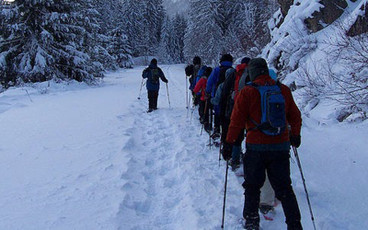Skull caps are our most popular cold weather product.
Posted by SweatHawg Headwear on 1st Dec 2017
Sweat management is at least as important in the winter as it is in summer. SweatHawg can help. Skull caps are our most popular cold weather offering. Wick and stay dry.
Don’t sweat. You may have heard this basic adage of winter adventure, which in my experience is all but impossible to achieve. But there are some simple things you can do to minimize the amount you sweat, which is still a very worthwhile goal.
Why not sweat? It’s simple. If you sweat, your base layer gets damp or wet. If your base layer is wet, it takes a lot of body heat to warm that moisture, evaporate it away, and keep you comfortable. And if that doesn’t happen, the moisture will cool you down and eventually chill you unpleasantly. Or, to put it more simply, damp base layers make you cold.
Hence the advice to avoid sweating in the first place, which isn’t really achievable. Here’s what you can do, however, to reduce the amount you do sweat.
Sense your sweat
Pay close attention to your body as you begin to exert yourself in the cold and learn to recognize the specific moment when you begin to perceptibly sweat. For me, it’s when a flush of warmth radiates across my skin and I can almost sense the sweat pores opening up. That’s the moment to take some, or all, of the following steps.
Adjust your layers
You need surprisingly few layers to stay warm when working hard in the cold, and should de-layer to that level as soon as you sense your body sweating. (Note that if you’re not cold when you begin moving, you will rapidly overheat as your body warms from the exertion.) Note that Gore-Tex and equivalent waterproof-breathable materials, as well as windproof fleece, are not actually that breathable and quickly begin to trap sweat beneath them faster than they allow it to pass through, which can prompt the next step…
Ventilate, ventilate
Stripped down to nothing but a base layer and outer shell, but still sweating? Unzip the pit zips on your jacket if it has them. Open the front zipper as much as conditions, or your backpack, allow. If your pants or bibs have side-zips (a highly recommended feature), open them as well. You may consider removing your jacket entirely.
Move slow and steady
This is one of the most challenging pieces of advice to follow. Moving slowly enough to dramatically reduce your sweat feels like you’re moving at a snail’s lethargic pace. But doing so not only reduces the sweat factor, it also conserves your energy and allows you to maintain a sustained pace for extended periods of time.
My favorite slow-and-steady technique is to match steps with slow, steady breathing. One step for each inhale, one for each exhale. On climbs and other strenuous, sweat-inducing terrain, it’s one step for each full breath (inhale and exhale). Though slow, it’s consistent, low-sweat, and a great way to maintain a pace for the long haul.
Stay dry. Stay warm! You can check out the article from Matt Heid at Outdoors.org on sweating in the cold.


